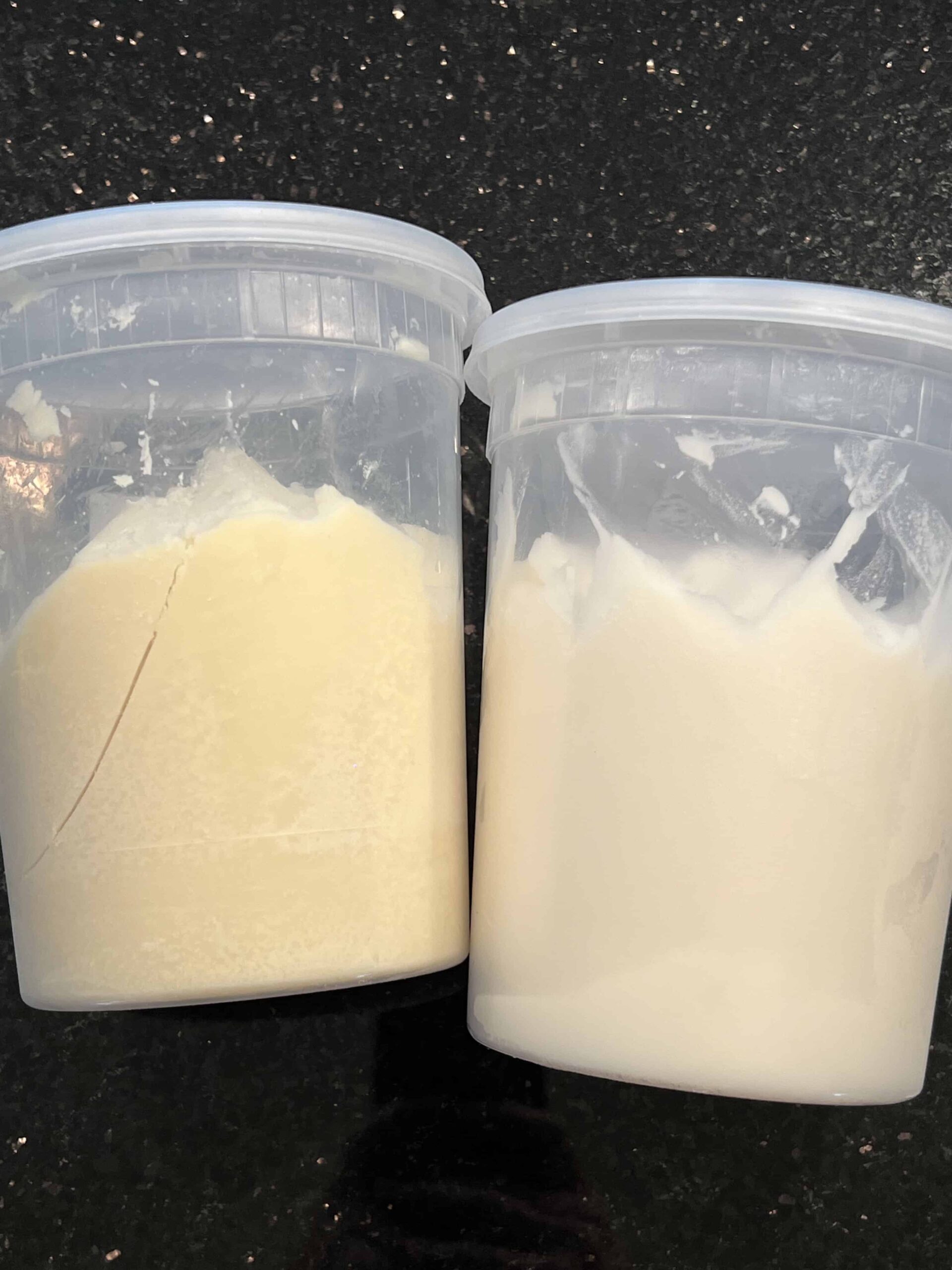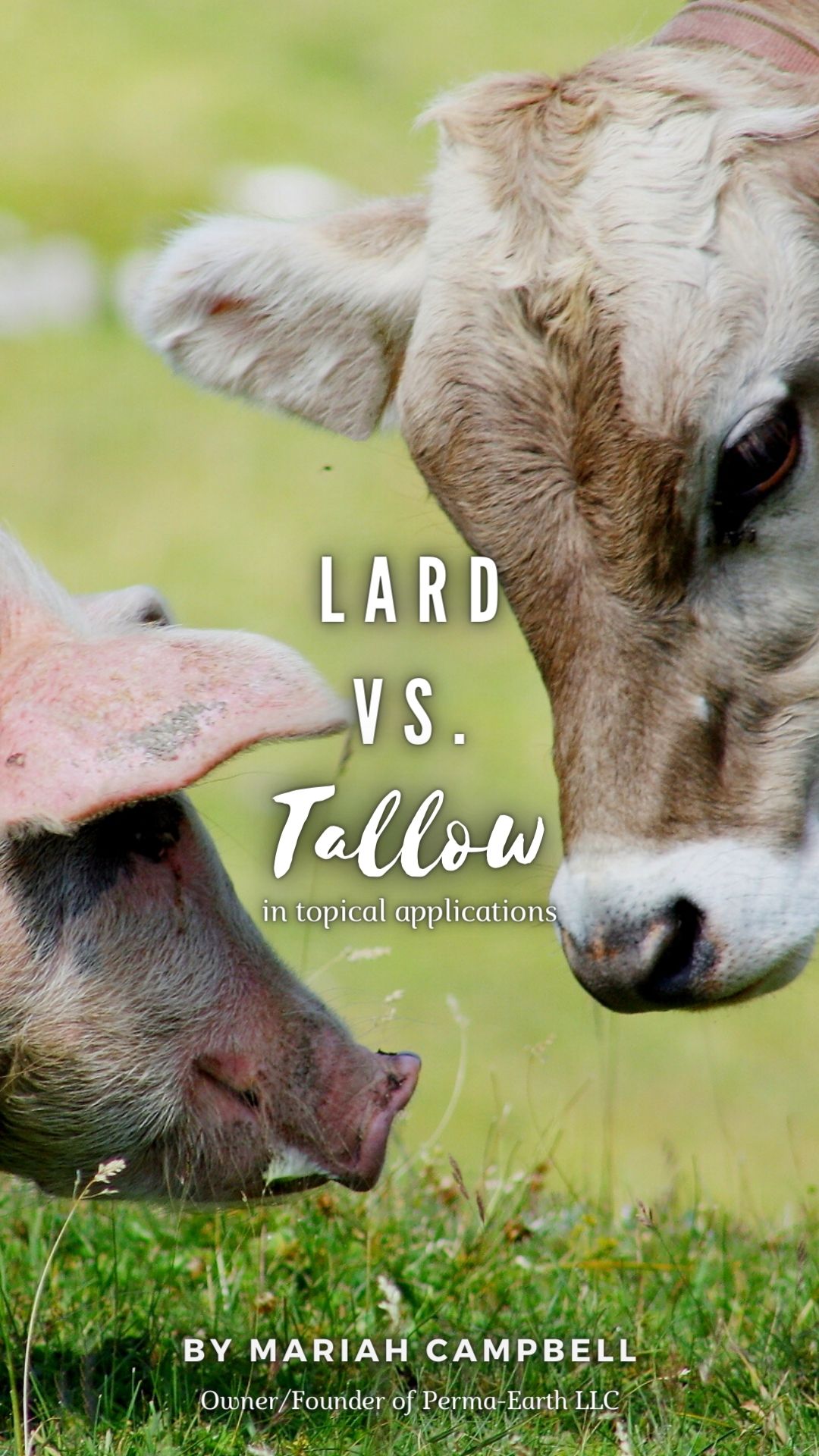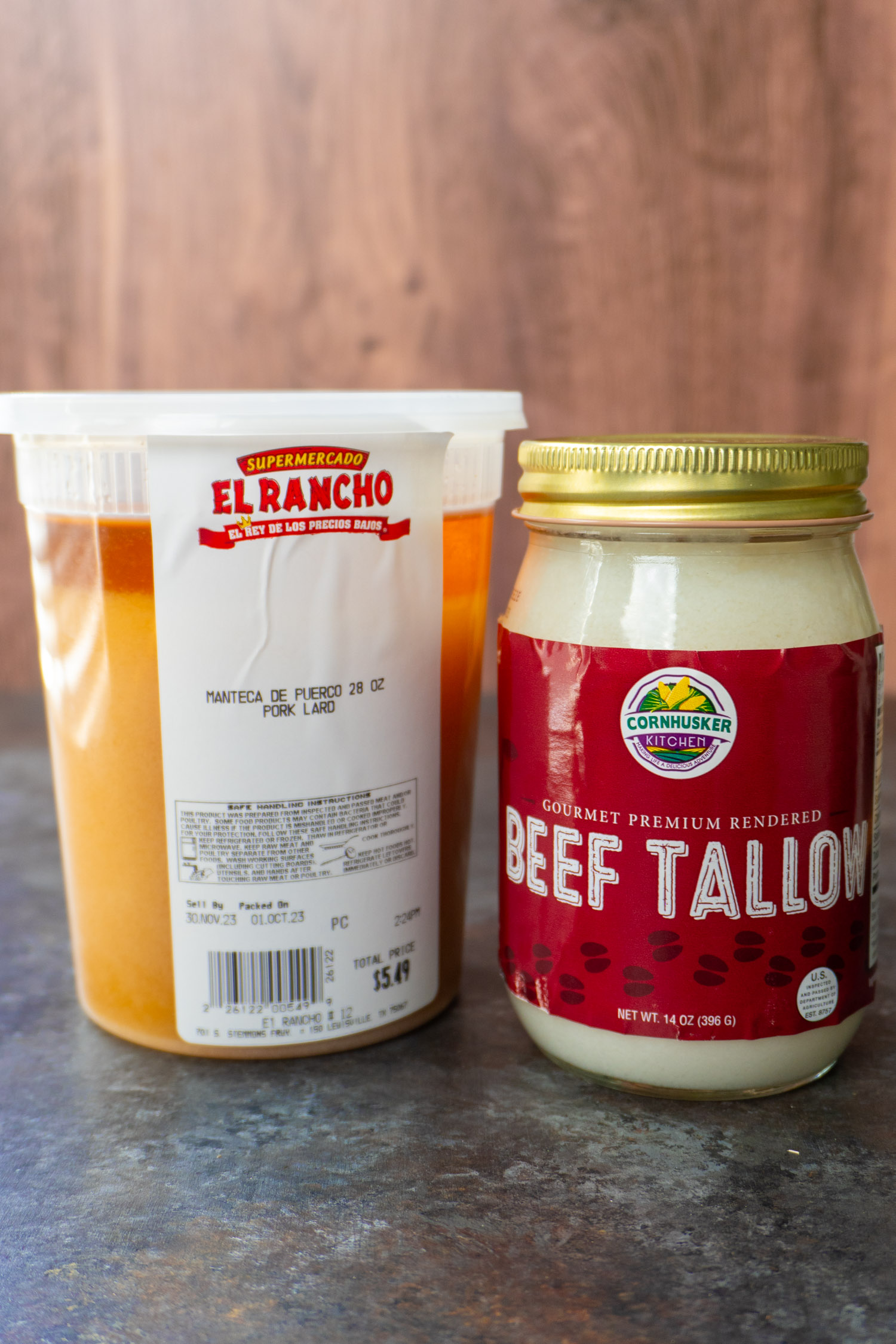What Is Tallow And Lard?

Tallow and lard are both types of animal fats that have been rendered, or heated to separate the pure fat from any solids. Tallow is specifically derived from beef fat, while lard is made from pork fat. These fats have been used in cooking and skincare for centuries due to their unique properties. Tallow is known for its high smoking point, making it ideal for frying and sautéing, while lard adds a rich and savory flavor to dishes. Both fats also offer nourishing benefits for the skin and hair, making them popular choices in natural skincare products.
What Is Tallow?
Tallow is a type of animal fat that is derived from the fatty tissue of ruminant animals, such as cattle, bison, and lamb. It is obtained by heating and melting the fat, and then separating it from any impurities or solids. Tallow has been used for centuries in various applications due to its unique properties. It has a high smoking point, which makes it suitable for frying and sautéing, and it adds a rich flavor to dishes. Tallow is also valued for its skincare benefits, as it is moisturizing and nourishing for the skin and hair.
What Is Lard?
Lard is a type of animal fat that is derived from the fatty tissue of pigs. It is obtained by rendering, a process that involves heating and melting the fat to separate it from any impurities or solids. Lard has a smooth and creamy texture, making it ideal for baking and pastry-making. It has a mild flavor that enhances the taste of baked goods. Lard is also rich in fat-soluble vitamins and has a balanced fatty acid profile, offering potential health benefits. It is important to choose lard sourced from pasture-raised pigs for the best quality and nutritional value.
Nutritional Content And Health Benefits

Tallow and lard both offer unique nutritional content and health benefits. Tallow is primarily composed of saturated and monounsaturated fats, which are essential for hormone regulation and brain function. It is also rich in fat-soluble vitamins like vitamin E and K. On the other hand, lard has a balanced fatty acid profile that includes both saturated and unsaturated fats. It is a good source of vitamin D, which plays a crucial role in bone health and immune function. Incorporating these animal fats into your diet can provide you with important nutrients and support overall health.
Nutritional Content Of Tallow
Tallow is primarily composed of saturated and monounsaturated fats, making it a rich source of essential nutrients. It also contains fat-soluble vitamins like vitamin E and K, which play a crucial role in supporting overall health. These vitamins have antioxidant properties, helping to protect cells from damage caused by free radicals. Tallow also provides important trace minerals such as zinc, magnesium, and selenium. Including tallow in your diet can contribute to a well-rounded nutritional profile and support hormone regulation, brain function, and immune system health.
Nutritional Content Of Lard
Lard is composed mainly of triglycerides, which are fats made up of three fatty acid molecules bound to a glycerol molecule. It contains approximately 37% saturated fatty acids, 46% monounsaturated fatty acids, and 17% polyunsaturated fatty acids. This diverse fatty acid profile is beneficial for our health, as it provides a balance of different types of fats. Lard also contains fat-soluble vitamins, including vitamins A, D, E, and K. These vitamins play essential roles in supporting immune function, cell growth, and maintaining healthy skin. Adding lard to your diet can contribute to a well-rounded nutritional profile.
Culinary Uses

Culinary Uses:
Tallow and lard have been beloved staples in traditional cooking for centuries, and their unique properties lend themselves to a variety of culinary uses.
Tallow, with its rich and savory flavor, is perfect for high-temperature cooking methods like frying and roasting. It adds a depth of flavor to dishes such as fried chicken, french fries, and roasted vegetables. Tallow is also commonly used in making traditional dishes like beef tallow confit and tallow-based gravies.
On the other hand, lard’s mild and neutral taste makes it the go-to fat for baking and creating flaky pastries. It adds moisture and richness to baked goods like pie crusts, biscuits, and cookies. Lard is also a popular choice for frying foods like donuts and churros, as it imparts a light and crispy texture.
Both tallow and lard can be used interchangeably in certain recipes, depending on the desired flavor profile. Experimenting with these fats in your culinary endeavors can elevate your dishes to a whole new level of deliciousness.
Culinary Uses Of Tallow
Tallow, with its rich and savory flavor, is highly versatile in the kitchen. It is commonly used for high-temperature cooking methods such as frying and roasting. The high smoke point of tallow allows for deep frying, providing a crispy and delicious texture to foods like fried chicken and french fries. Tallow is also an excellent choice for roasting vegetables, as it adds a depth of flavor. Additionally, tallow is often used in traditional recipes like beef tallow confit and tallow-based gravies, enhancing the taste and richness of the dishes. Its unique flavor profile makes tallow a favorite among chefs and home cooks alike.
Culinary Uses Of Lard
Lard, with its mild and neutral flavor, is highly versatile in the kitchen. It is commonly used for baking and creating flaky pastries. Lard adds moisture and richness to baked goods, resulting in a tender and delicious texture. It is perfect for making pie crusts, biscuits, and croissants. Lard can also be used for sautéing and frying, providing a delicate and flavorful base for dishes. Its high smoke point makes it suitable for high-temperature cooking methods. Overall, lard is a go-to ingredient for achieving amazing flavor and texture in a variety of culinary creations.
Skin And Hair Benefits

Both tallow and lard offer a range of benefits for skin and hair. Tallow is rich in fatty acids, providing deep moisturization and nourishment to the skin. It can help improve the skin’s elasticity and reduce the appearance of wrinkles and fine lines. Tallow also contains antimicrobial properties, making it beneficial for treating acne and other skin conditions. When used as a hair treatment, tallow can help restore shine and strength to damaged hair. Lard, on the other hand, is known for its moisturizing properties and can help soothe dry and irritated skin. It can also be used as a natural conditioner for hair, leaving it soft and manageable. Both tallow and lard offer natural and effective solutions for maintaining healthy skin and lustrous hair.
Benefits Of Using Tallow For Skin And Hair
Tallow offers a range of benefits for both skin and hair. Its rich fatty acid content provides deep moisturization, nourishing the skin and improving its elasticity. Tallow’s antimicrobial properties make it effective in treating acne and other skin conditions. It can also reduce the appearance of wrinkles and fine lines. When used as a hair treatment, tallow helps restore shine and strength to damaged hair, making it more manageable. With its natural and effective properties, tallow is a great choice for maintaining healthy and radiant skin and hair.
Benefits Of Using Lard For Skin And Hair
Lard offers a range of benefits for both the skin and hair. Its high fat content provides deep moisturization, keeping the skin hydrated and supple. Lard is also rich in vitamins and antioxidants, which help nourish and rejuvenate the skin, leaving it looking youthful and radiant. Additionally, lard can be used as a natural conditioner for the hair, making it soft, shiny, and more manageable. Its moisturizing properties help repair damage and prevent dryness. Incorporating lard into your skincare and haircare routine can result in healthier, more beautiful skin and hair.
Environmental Impact

The production of both tallow and lard has environmental implications. The environmental impact of tallow production is mainly associated with the raising and processing of beef, which can contribute to deforestation, greenhouse gas emissions, and water pollution. On the other hand, lard production is linked to the pig farming industry, which also has its own set of environmental challenges, including waste management and land use issues. In order to mitigate these effects, it is important to prioritize sustainable and ethical practices in the production of both tallow and lard, such as opting for grass-fed and pasture-raised options.
Environmental Impact Of Tallow Production
The production of tallow has a significant environmental impact, primarily due to its association with beef production. Raising and processing beef cattle can contribute to deforestation, as land is cleared to make space for grazing pastures and feed crops. Additionally, beef production is a major source of greenhouse gas emissions, contributing to climate change. The processing of tallow also poses a risk of water pollution, as chemicals used in the rendering process can contaminate nearby water sources. To mitigate these environmental effects, it is crucial to prioritize sustainable and ethical practices in the beef industry, such as opting for grass-fed beef and supporting regenerative farming methods.
Environmental Impact Of Lard Production
The production of lard also has environmental implications, although they may be less significant compared to tallow. Lard is derived from pig fat, and pig farming can contribute to deforestation and habitat destruction, similar to beef production. However, the greenhouse gas emissions associated with pig farming are relatively lower than those of beef cattle. Additionally, the processing of lard can also create water pollution risks if proper waste management practices are not followed. To minimize the environmental impact of lard production, it is important to support sustainable and responsible pig farming practices, such as organic and pasture-raised methods.
Conclusion

In conclusion, when comparing tallow and lard, it is evident that both have their own unique properties and benefits. Tallow, derived from beef fat, offers a higher concentration of saturated fat and is a popular choice for cooking and skincare. On the other hand, lard, derived from pork fat, provides a rich flavor and is commonly used in baking and frying. It is important to note that the quality of the animal’s diet and farming practices greatly influences the nutritional content and overall benefits of these animal fats. Ultimately, the choice between tallow and lard depends on personal preferences and dietary needs.
Comparison Of Tallow And Lard
When comparing tallow and lard, it is evident that both have their own unique properties and benefits. Tallow, derived from beef fat, offers a higher concentration of saturated fat, while lard, derived from pork fat, provides a rich flavor. Tallow has a higher smoke point than lard, making it suitable for high-heat cooking methods. On the other hand, lard is often used in baking due to its ability to create flaky textures. Both fats are versatile and can be used interchangeably in various recipes. Ultimately, the choice between tallow and lard depends on personal preferences and dietary needs.
Which Is Better For Cooking And Skincare?
When it comes to cooking, both tallow and lard have their advantages. Tallow’s higher smoke point makes it great for high-heat cooking methods like frying and roasting, while lard’s rich flavor and texture-enhancing properties make it perfect for baking. Ultimately, the choice depends on personal preference and the specific dish you are preparing.
In terms of skincare, both tallow and lard have moisturizing properties that can benefit the skin. Tallow’s composition is similar to the skin’s natural oils, making it easily absorbed and nourishing for dry or sensitive skin. Lard, on the other hand, can help keep the skin hydrated and can be used as a moisturizer or in homemade skincare products. Ultimately, the choice between tallow and lard for skincare depends on individual preferences and skin type.
FAQ About Tallow Vs Lard: Comparing Animal Fats
Q: What is tallow and lard?
A: Tallow is rendered fat from beef or mutton, while lard is rendered fat from pigs.
Q: Are tallow and lard interchangeable in cooking?
A: Yes, tallow and lard are often used interchangeably in cooking for similar applications like frying and baking.
Q: What are the flavor differences between tallow and lard?
A: Tallow tends to have a subtle beefy flavor, while lard has a distinct pork flavor, which can affect the taste of dishes.
Q: Are there any nutritional differences between tallow and lard?
A: Tallow is higher in saturated fats compared to lard, but both fats can be part of a balanced diet when consumed in moderation.
Q: Can tallow and lard be used for skincare purposes?
A: Both tallow and lard are traditionally used in skincare for their moisturizing properties and can be incorporated into homemade skincare products.
Q: What is the smoking point of tallow and lard?
A: Tallow has a higher smoking point than lard, making it a good option for high-heat cooking methods like deep-frying.

Johnny Knuckles Knock-out BBQ is a culinary haven for barbecue enthusiasts, offering a fusion of traditional BBQ and tantalizing street fare. Our secret to delivering mouthwatering dishes lies in our meticulous preparation process. Each cut of meat is lovingly hand-rubbed and slow-smoked over 100% hardwood, creating a symphony of flavors that will leave your taste buds dancing. Whether planning a special event or simply craving an unforgettable meal, Johnny Knuckles Knock-out BBQ is here to elevate your dining experience. Our catering services are designed to bring the sizzle and aroma of our delectable BBQ to your event, ensuring that every guest leaves with a full belly and a smile.